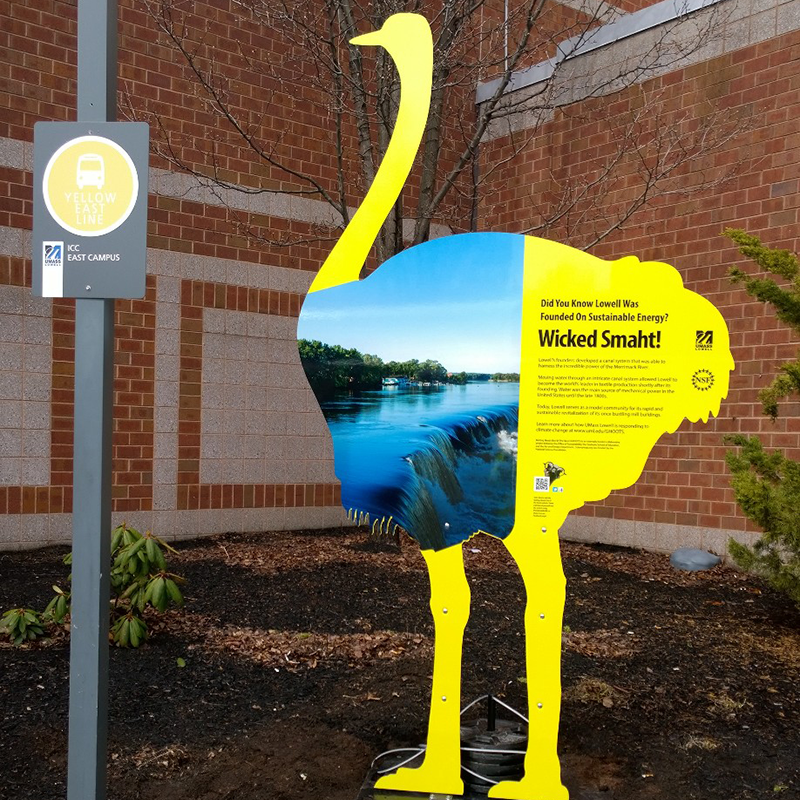From June 1, 2016 to May 31, 2018, a Sustainability Cultural Assessment was sent out to the entire student population. This assessment of the student body's interest in and engagement with climate change and sustainability on campus is part of our AASHE STARS Reporting and better guides our actions on campus!
This dynamic campus sustainability cultural assessment was based on the work done in the College of Education in a White House award-winning climate education program called ScienceToGo. Several large ostrich cutouts were designed as out-of-home media educational tools for campus sustainability culture, and the campus community was surveyed before and after they were spread around campus. The project was called Getting Heads Out of the Sand or GHOOTS.
Survey Design
- Improve UMass Lowell community’s understanding of the sustainability efforts on campus,
- Engage UMass Lowell’s community in climate change science and sustainable practices,
- Investigate UMass Lowell Community's attitudes and perspectives on climate change and the sustainability efforts on campus, and
- Use results to improve UMass Lowell’s standing as a climate leader and write a larger proposal for the National Science Foundation.
Platform Used
The assessment was administered through Qualtrics, an online survey management tool and sent to the entire campus community through email. A prize-drawing incentive was offered to student participants in both the pre- and post-survey.

